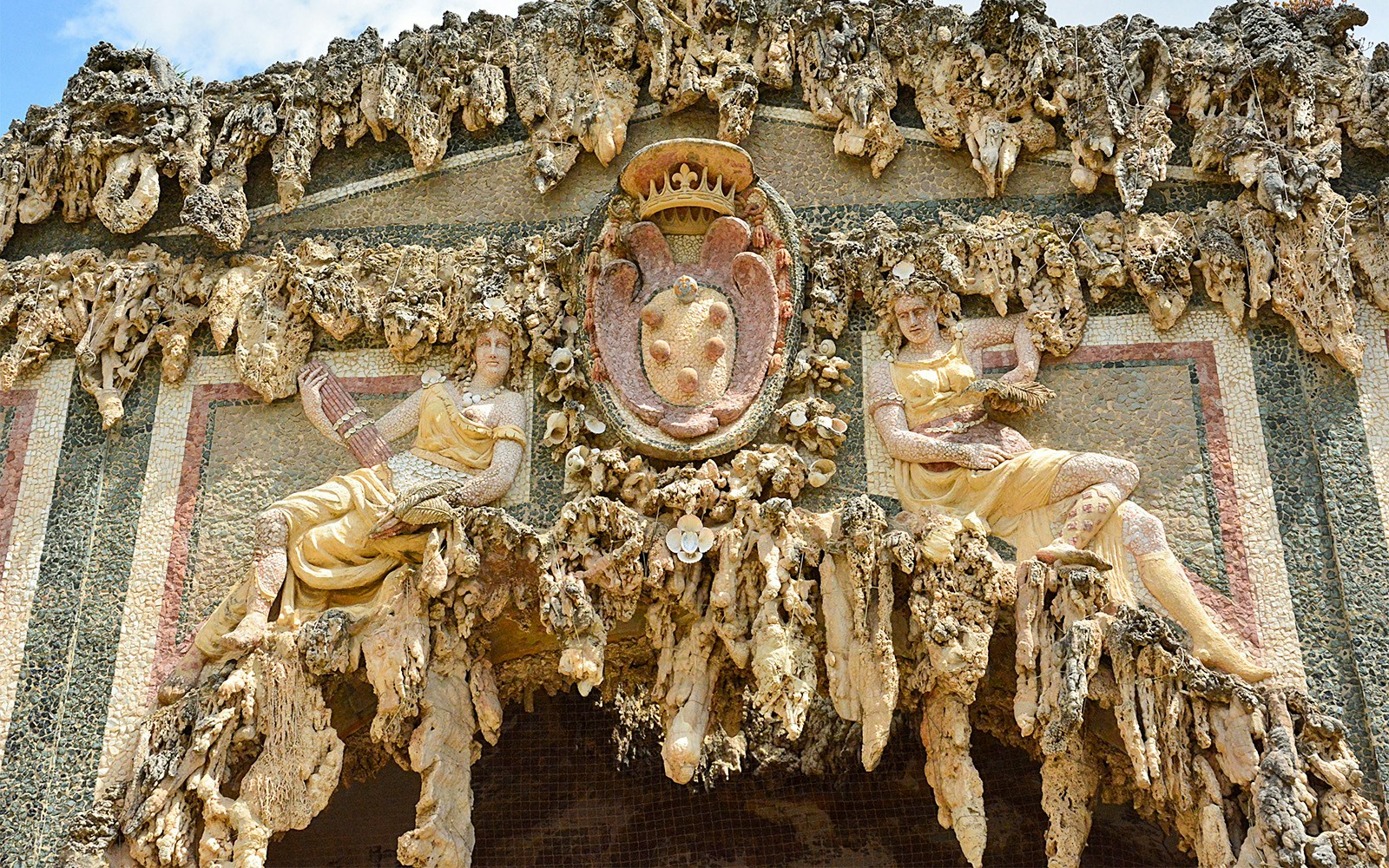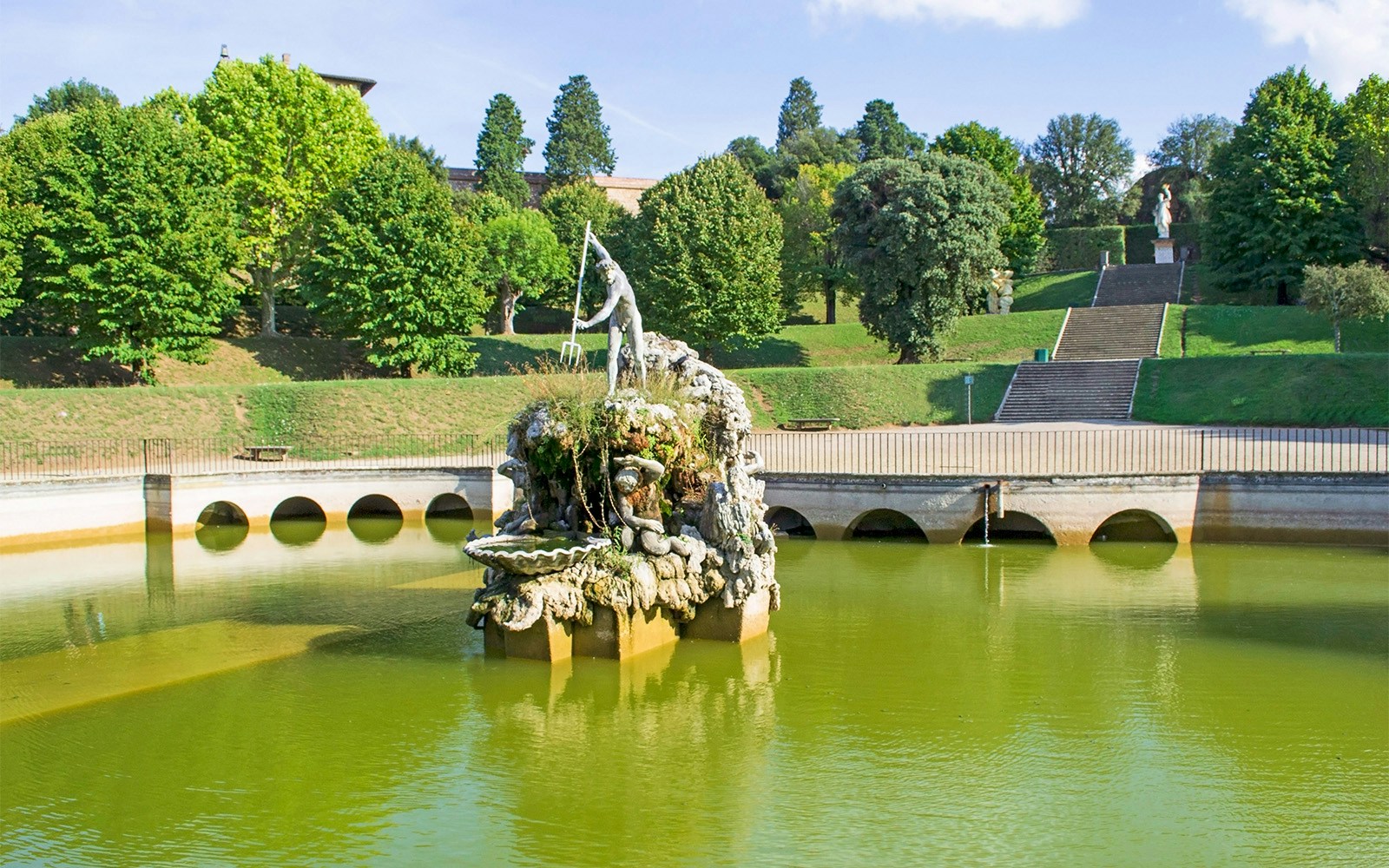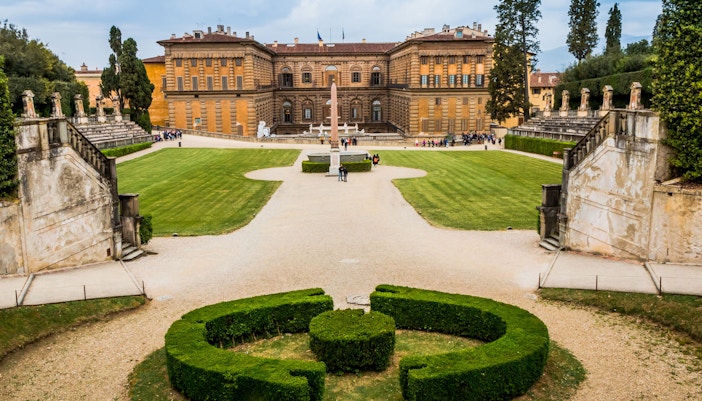The gardens owe their groundbreaking symmetrical design to architect Niccolò Pericoli, aka Tribolo. With the Medici family's patronage, Tribolo envisioned a Renaissance masterpiece – one that blended art and nature. His other famous works include the Villa Medici in Poggio a Caiano, Funeral Chapel of Eleonora di Toledo and Medici Villas La Petraia and Villa Castello. Today, Tribolo's legacy lives on, as Boboli Gardens continue to inspire artists and visitors alike, leaving a lasting mark on cultural history.
Things to see at Boboli Gardens

The Fountain of Bacchus (Fontana di Bacco)
The whimsical Renaissance masterpiece portrays a playful scene of Nano Morgante, the court jester, riding a tortoise in the guise of Bacchus, the Roman god of wine. Crafted by Valerio Cioli, this fountain is a symbol of joy and abundance.





























